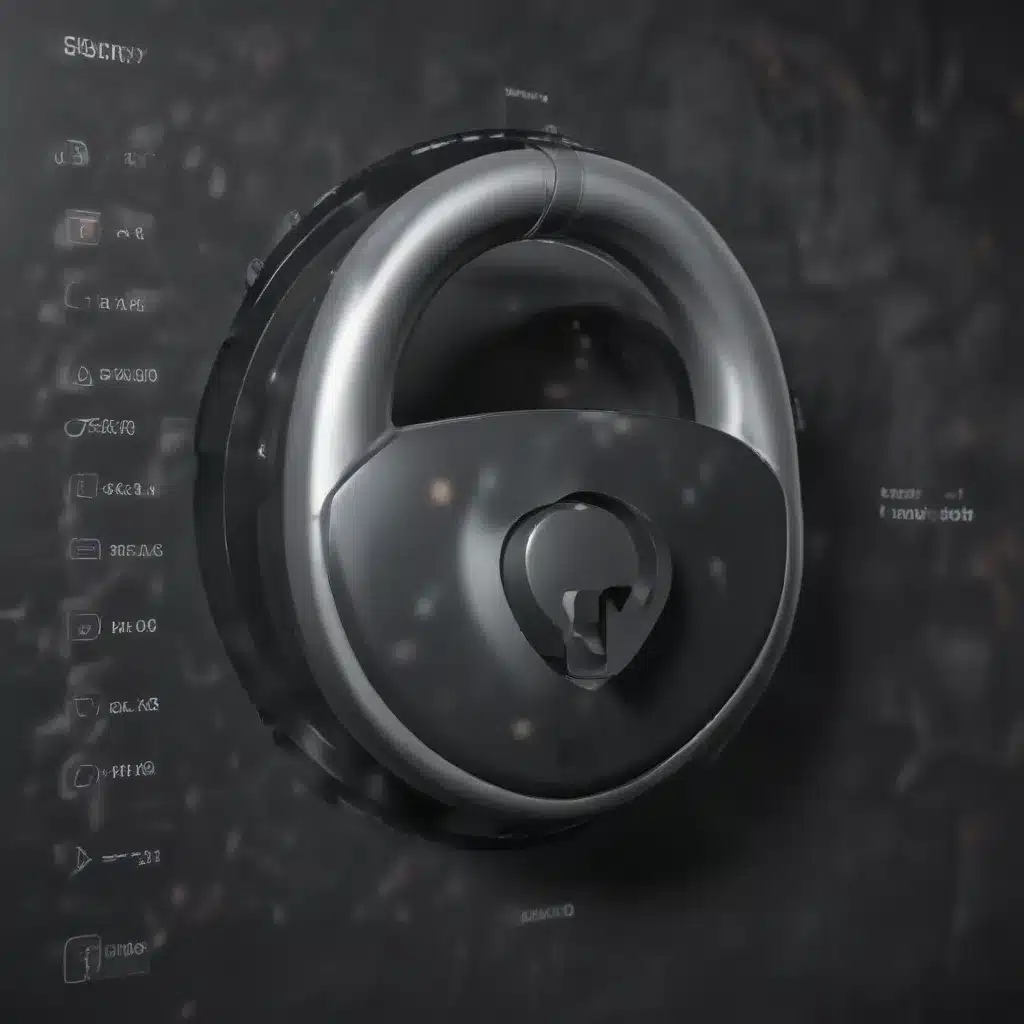
The Evolving Cybersecurity Landscape
In an era where digital threats continue to escalate, organizations must prioritize robust security measures to protect their critical systems and sensitive data. Traditional password-based authentication has long been the standard, but as cyber-attacks become increasingly sophisticated, IT professionals are recognizing the need for more advanced authentication mechanisms to enhance overall operating system (OS) security.
The rise of advanced persistent threats, social engineering tactics, and data breaches has highlighted the vulnerabilities inherent in relying solely on passwords. Cybercriminals have honed their skills in circumventing these basic authentication methods, making it imperative for organizations to explore and implement more secure alternatives.
Beyond Passwords: Exploring Advanced Authentication Solutions
To address the shortcomings of password-based authentication, the IT industry has developed a range of advanced authentication mechanisms that provide stronger security and improved user experience. These solutions leverage various technologies and techniques to verify user identities and grant access to critical systems and resources.
Multi-Factor Authentication (MFA)
One of the most widely adopted advanced authentication methods is Multi-Factor Authentication (MFA). MFA requires users to present two or more independent forms of credentials to verify their identity, such as a combination of:
- Knowledge factors: Something the user knows, like a password or PIN.
- Possession factors: Something the user has, like a smartphone or hardware security key.
- Inherence factors: Something the user is, like a biometric characteristic (fingerprint, facial recognition, or voice recognition).
By incorporating multiple authentication factors, MFA significantly enhances the security of the authentication process, making it much more difficult for attackers to gain unauthorized access. Even if one factor is compromised, the additional layers of security help to prevent a successful breach.
Biometric Authentication
Biometric authentication leverages the unique physical or behavioral characteristics of an individual to verify their identity. This includes technologies such as:
- Fingerprint scanning: Utilizing the unique patterns of a user’s fingerprint for authentication.
- Facial recognition: Identifying individuals based on their facial features and characteristics.
- Voice recognition: Verifying a user’s identity through their unique voice patterns and characteristics.
- Iris scanning: Analyzing the intricate patterns of the human iris for authentication purposes.
Biometric authentication is often considered more secure than traditional password-based methods, as it is much more difficult for attackers to replicate or spoof these unique biological identifiers. Additionally, biometric authentication can provide a more seamless and convenient user experience, as users no longer need to remember and enter complex passwords.
Certificate-based Authentication
Certificate-based authentication utilizes digital certificates to verify the identity of users, devices, or systems. These certificates are issued by a trusted Certificate Authority (CA) and contain information about the entity, such as their public key and other identifying details.
When a user or device attempts to access a system or resource, the authentication process involves verifying the digital certificate’s validity and ensuring that the presented public key matches the private key held by the authorized entity. This approach provides a robust and scalable method of authentication, as it can be easily integrated into enterprise-level security frameworks.
Token-based Authentication
Token-based authentication relies on the generation and use of unique, encrypted tokens to grant access to systems and resources. These tokens serve as a digital representation of a user’s identity and authentication credentials, allowing them to authenticate without repeatedly entering their login information.
Common use cases for token-based authentication include:
- Single Sign-On (SSO): Enabling users to authenticate once and gain access to multiple applications or services.
- API authentication: Securing access to Application Programming Interfaces (APIs) by requiring token-based authentication.
- Session management: Maintaining secure user sessions by using tokens to verify ongoing user identity and authorization.
By leveraging tokens, organizations can enhance security, improve user convenience, and streamline the authentication process across their IT infrastructure.
Integrating Advanced Authentication into Operating Systems
As the demand for robust security measures continues to grow, leading operating system providers have integrated advanced authentication mechanisms into their platforms, providing users and organizations with enhanced protection.
Windows Hello
Microsoft’s Windows Hello is a biometric authentication feature that allows Windows 10 and 11 users to securely log in to their devices using facial recognition, fingerprint scanning, or a PIN. This integration of biometric authentication directly into the OS eliminates the need for traditional passwords, providing a more secure and convenient user experience.
macOS Biometric Authentication
Apple’s macOS also supports biometric authentication through the integration of Touch ID and Face ID. Users can leverage these technologies to authenticate and access their devices, as well as authorize transactions and access sensitive information within compatible applications.
Linux Authentication Frameworks
While Linux distributions have traditionally relied on password-based authentication, the operating system’s modular design has enabled the development of various authentication frameworks that incorporate advanced mechanisms. These include the Pluggable Authentication Modules (PAM) system, which allows for the integration of MFA, biometric authentication, and other security-focused authentication methods.
Embracing the Future of Secure Authentication
As cybersecurity threats continue to evolve, the adoption of advanced authentication mechanisms has become a crucial step in safeguarding operating systems and the sensitive data they protect. By leveraging technologies like MFA, biometrics, certificates, and tokens, organizations can significantly enhance the security of their IT infrastructure and provide users with a more seamless and secure authentication experience.
To stay ahead of the curve, IT professionals should closely monitor the latest developments in authentication technologies and actively explore ways to integrate these solutions into their organization’s security strategy. By doing so, they can ensure that their operating systems and the critical assets they safeguard remain resilient against the ever-changing landscape of cyber threats.
For more information on enhancing OS security and exploring advanced authentication options, visit https://itfix.org.uk/. Our team of seasoned IT experts is dedicated to providing practical guidance and in-depth insights to help organizations navigate the complexities of modern cybersecurity challenges.












